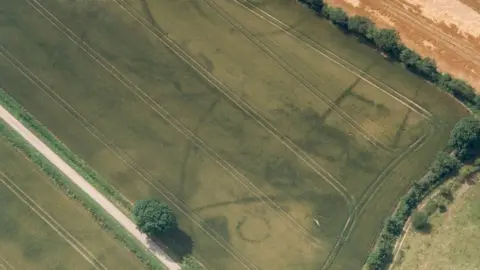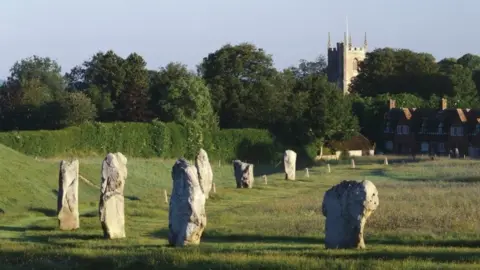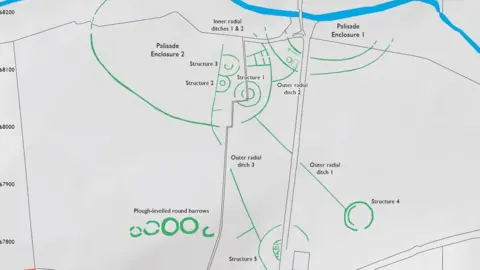Date breakthrough at prehistoric site in Avebury
 Historic England
Historic EnglandTwo prehistoric wooden structures 20 miles north of Stonehenge are 800 years older than previously thought, scientists have revealed.
The circles, which may have been used for festivals or rituals, at West Kennet near Avebury are now believed to have been built in 3300BC.
New radiocarbon dating tests have been carried out by Historic England.
Professor Alex Bayliss said finding "palisades of this time is completely unprecedented in British archaeology".
 Historic England
Historic England The structures stretched over 4km (2.5 miles) and were built with more than 4,000 trees.
Professor Bayliss said: "We've discovered a completely new type of monumental structure at a time when we didn't think any existed in Britain.
"There are palisades later and earlier but these are different."
She said the tests were carried out using charcoal samples excavated by Professor Alisdair Whittle, from Cardiff University, 30 years ago.
'Deepens our understanding'
When the palisades were found in the original excavation in 1987 and the early 1990s, it was believed they were built in about 2500BC.
But Professor Bayliss said developments in radiocarbon dating techniques now enabled them to be more accurate.
She said the palisades were "probably used very briefly" and were "definitely burnt down deliberately".
She said speculation about their purpose included a festival or that one enclosure could have been for women and the other for men for rituals.
 Historic England
Historic England Professor Whittle added it was a "wonderful set of results".
"It's significant because it places the construction earlier and it's a period about which we don't know a lot," he said.
"It also shows us a lot of later activity of either people gathering seasonally or even permanently in what seems to be quite large numbers.
"It deepens our understanding of people coming to that area at a time when Avebury and Silbury Hill were being constructed."
 Historic England
Historic England